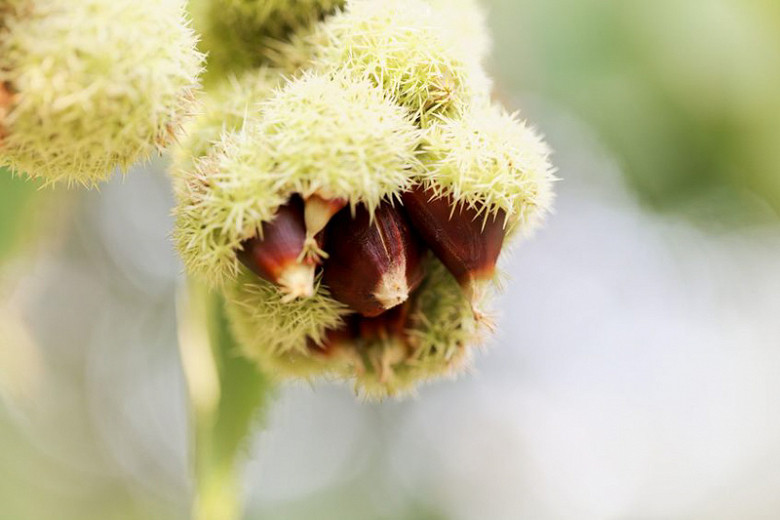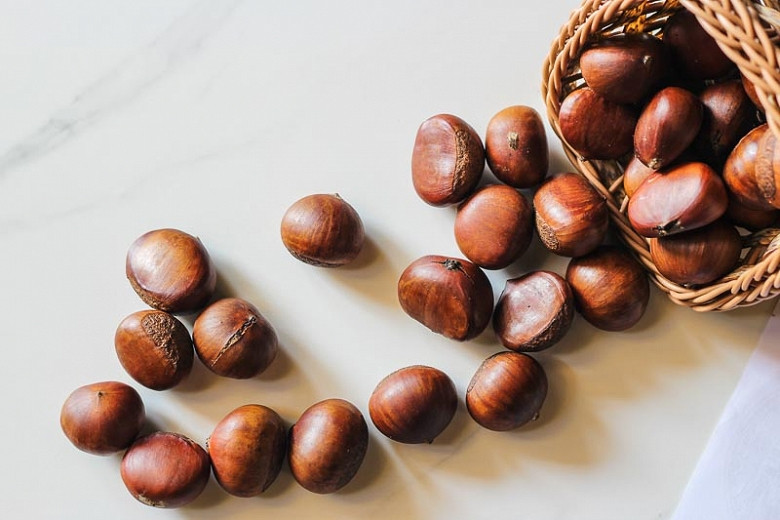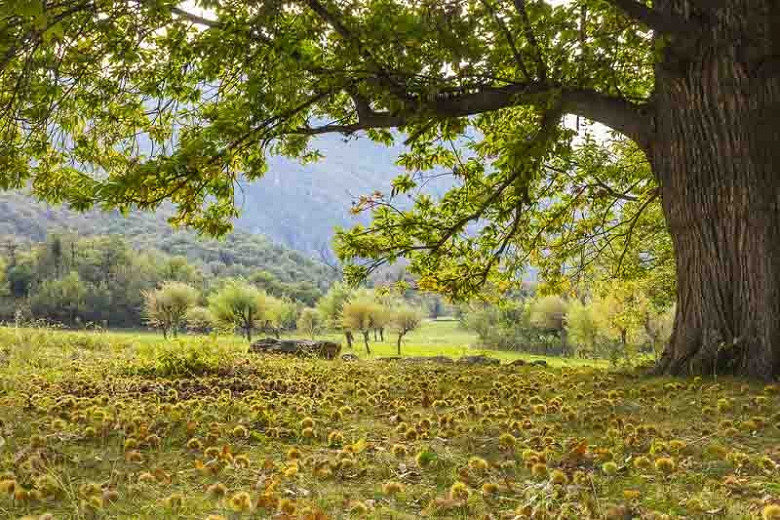Castanea pumila (Dwarf Chestnut)
Castanea pumila (Dwarf Chestnut) is a large thicket-forming shrub or small tree with spreading lower branches and ascending upper branches. The alternate, oblong, finely serrated leaves, 3-5 in. long (7-12 cm), are glossy green above, silvery tomentose underneath. Prominently veined, they turn yellow to golden brown in the fall. In spring to early summer, showy but strong-smelling, creamy-white flowers appear in catkins. They give way to edible chestnuts which are encased in spiny dehiscent burs, 1.5 in. across (3 cm). The nuts have a sweet flavor and are considered better tasting than those of American chestnut (Castanea dentata). They were a favorite of indigenous people and are also eaten by many birds and mammals, including squirrels, chipmunks, opossums, white-tailed deer, bluejays, pileated woodpeckers, red-headed woodpeckers. A beautiful specimen shade tree for lawns or to provide food for yourself and wildlife. Keep in mind that the falling chestnuts may pose a litter problem if not harvested.
- Grows up to 15-30 ft. tall (4-9 m) and 10-20 ft. wide (3-6 m).
- Performs best in dry, rocky, sandy, or loamy, acidic to neutral, well-drained soils in full sun to partial shade. Drought tolerant once established. Tolerant of summer heat.
- Generally pest free. Keep an eye out for chestnut blight, leaf spot, anthracnose, twig and stem cankers.
- Propagate by seed. Germination of seeds requires fall sowing or stratification.
- Native to the eastern and central United States.
Requirements
| Hardiness | 5 – 9 |
|---|---|
| Plant Type | Shrubs, Trees |
| Plant Family | Castanea – Chestnuts |
| Exposure | Full Sun, Partial Sun |
| Season of Interest | Spring (Early,Mid,Late)Summer (Early,Mid,Late)Fall |
| Height | 15' – 30' (4.5m – 9m) |
| Spread | 10' – 20' (3m – 6m) |
| Water Needs | Low |
| Maintenance | Average |
| Soil Type | Loam, Sand |
| Soil pH | Acid, Neutral |
| Soil Drainage | Well-Drained |
| Characteristics | Showy, Fruit & Berries |
| Native Plants | United States, Midwest, Indiana, Missouri, Ohio, Northeast, Delaware, Massachusetts, Maryland, New Jersey, New York, Pennsylvania, Southeast, Alabama, Arkansas, Florida, Georgia, Kentucky, Louisiana, Mississippi, North Carolina, South Carolina, Tennessee, Virginia, West Virginia, Southwest, Oklahoma, Texas |
| Tolerance | Drought |
| Attracts | Butterflies |
| Garden Styles | Prairie and Meadow |


